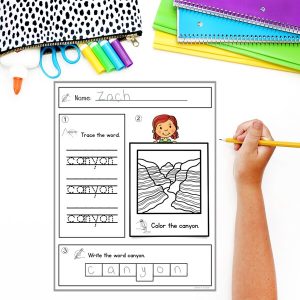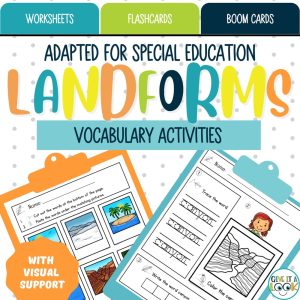 As a parent of a child with autism, I’ve discovered the transformative power of special interests. My non-verbal teenage son, for instance, is captivated by maps and globes. He examines globes closely, reads the names of familiar places on maps, and even navigates daily through Google Maps to zoom in on places we’ve travelled to. While his fascination is deeply enriching, it’s also specific and focused. That’s why I saw an opportunity to broaden his educational horizon to landforms and bodies of water. This approach is part of the strategies I shared in a blog post titled Teaching Strategies for Children with ASD
As a parent of a child with autism, I’ve discovered the transformative power of special interests. My non-verbal teenage son, for instance, is captivated by maps and globes. He examines globes closely, reads the names of familiar places on maps, and even navigates daily through Google Maps to zoom in on places we’ve travelled to. While his fascination is deeply enriching, it’s also specific and focused. That’s why I saw an opportunity to broaden his educational horizon to landforms and bodies of water. This approach is part of the strategies I shared in a blog post titled Teaching Strategies for Children with ASD
By creating this resource, I wanted to offer my son a chance to explore the world beyond his immediate interests. This toolkit is more than just a teaching resource; it’s a bridge to a wider world, built on the foundation of his special interests.
The Importance of Vocabulary in Special Education

Vocabulary isn’t just a list of words to memorize; it’s the cornerstone of understanding any subject matter, including geography and science. This is especially true for students with special needs who may require additional language acquisition and comprehension support. Teaching them the vocabulary related to landforms and bodies of water can enrich their educational experience and enhance their understanding of the world around them.
Why Specialized Resources Matter
A one-size-fits-all approach won’t cut it in a special education setting. Every activity, every worksheet, and every interactive game in this toolkit has been carefully crafted with visual supports to help each student grasp advanced vocabulary more easily. The visuals are engaging and appropriate for ages ranging from early learners to teenagers.
Time: The Most Valuable Resource
As educators, you’re always on the clock. Between administrative duties, planning lessons, and actual teaching time, the day can slip away before you know it. That’s why this resource is designed to be ready to use. Each activity is planned so you can focus more on engaging with your students and less on preparation.
Repetition and Reinforcement

One of the most effective ways to solidify new vocabulary is repetition and practice. Special needs students often require various opportunities to interact with new terms to integrate them into their lexicon. This toolkit offers multiple activities that reinforce vocabulary learning, ensuring that terms related to landforms and bodies of water are more likely to stick.
Versatility in Application
What makes this resource truly shine is its versatility. Whether working with tactile learners who benefit from cut-and-paste activities or verbal learners who excel with flashcards, this landforms and bodies of water toolkit has something for everyone.
Dive Deeper Into the Landforms and Bodies of Water Toolkit
Here’s a detailed look at what you can expect:
- Boom Cards: An engaging, interactive experience that captivates the student’s attention.
- Glossary: A comprehensive list of terms for quick reference.
- Flashcards: Perfect for quick reviews and vocabulary drills.
- Cut and Paste Worksheets: Excellent for hands-on learners.
- Matching Activity Worksheets: Reinforce recognition and understanding.
- Writing Activities: Tailored to help students commit vocabulary words to memory through writing, boosting their retention and understanding of terms related to landforms and bodies of water.
- Word Search Activities: A fun, yet educational, diversion.
- Writing Prompts: Develop vocabulary while honing expressive skills.
An Investment in Your Classroom
Investing in this comprehensive vocabulary toolkit on landforms and bodies of water is not just an investment in materials—it’s an investment in your students’ futures and your own teaching experience. By focusing on visual aids, time-saving elements, and effective repetitive practices, this resource could be the game-changer you’ve been looking for.
I’ve seen firsthand with my son how enriching vocabulary can expand a child’s world. It goes beyond the classroom walls, broadening their understanding of the planet they live on. Utilizing their special interests as a gateway, we can guide them into a wider world full of possibilities. This toolkit aims to do just that, bridging a child’s immediate interests and a wider knowledge of the world.



